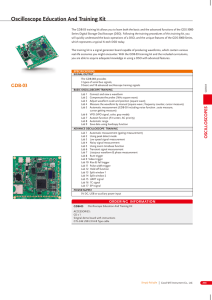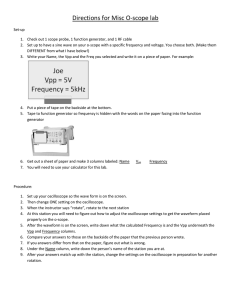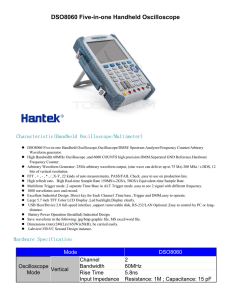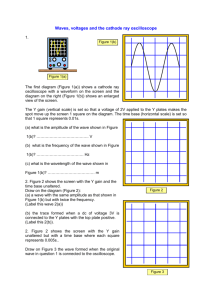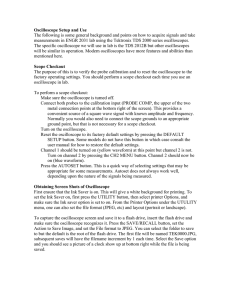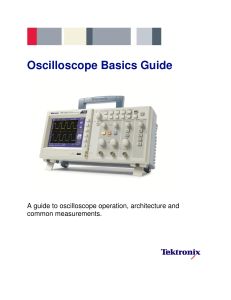Oscilloscope Measurement Activity
advertisement
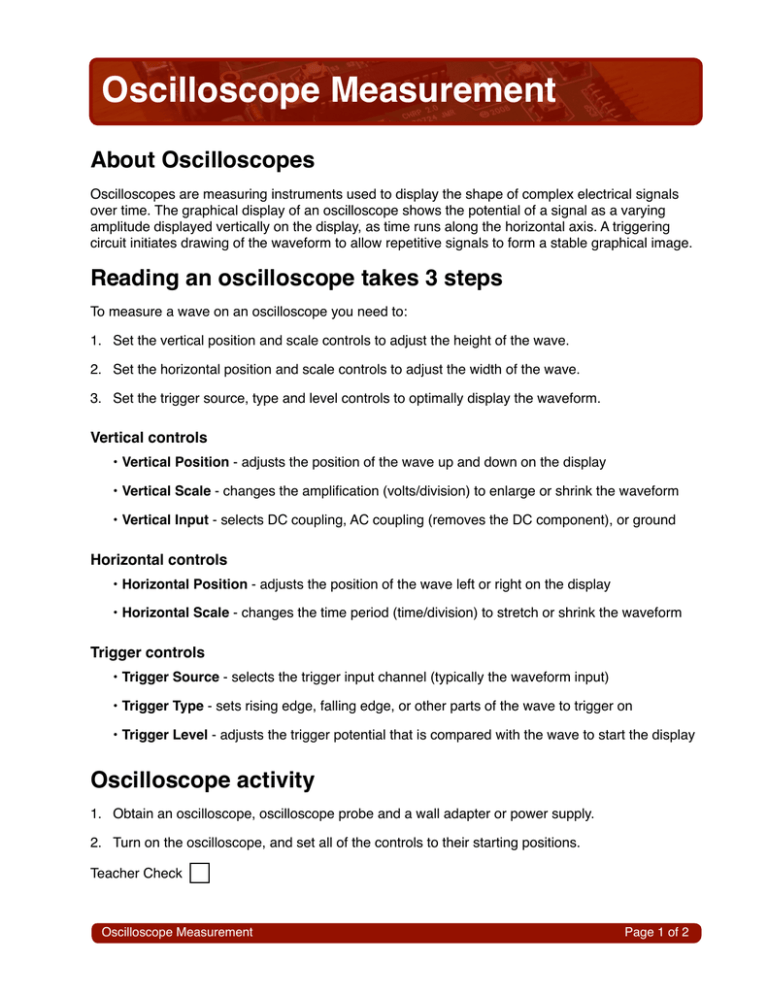
Oscilloscope Measurement! About Oscilloscopes! Oscilloscopes are measuring instruments used to display the shape of complex electrical signals over time. The graphical display of an oscilloscope shows the potential of a signal as a varying amplitude displayed vertically on the display, as time runs along the horizontal axis. A triggering circuit initiates drawing of the waveform to allow repetitive signals to form a stable graphical image.! Reading an oscilloscope takes 3 steps! To measure a wave on an oscilloscope you need to:! 1. Set the vertical position and scale controls to adjust the height of the wave.! 2. Set the horizontal position and scale controls to adjust the width of the wave.! 3. Set the trigger source, type and level controls to optimally display the waveform.! Vertical controls! • Vertical Position - adjusts the position of the wave up and down on the display! • Vertical Scale - changes the amplification (volts/division) to enlarge or shrink the waveform! • Vertical Input - selects DC coupling, AC coupling (removes the DC component), or ground! Horizontal controls! • Horizontal Position - adjusts the position of the wave left or right on the display! • Horizontal Scale - changes the time period (time/division) to stretch or shrink the waveform! Trigger controls! • Trigger Source - selects the trigger input channel (typically the waveform input)! • Trigger Type - sets rising edge, falling edge, or other parts of the wave to trigger on! • Trigger Level - adjusts the trigger potential that is compared with the wave to start the display! Oscilloscope activity! 1. Obtain an oscilloscope, oscilloscope probe and a wall adapter or power supply.! 2. Turn on the oscilloscope, and set all of the controls to their starting positions.! Teacher Check ! Oscilloscope Measurement! Page 1 of 2 3. Clip the oscilloscope probe tip to the calibration output on the front of the oscilloscope.! 4. Adjust the vertical, horizontal and triggering controls to display the largest, stable waveform.! 5. Draw the waveform, and list the horizontal and vertical settings, below:! 6. Measure the peak-peak potential and time period of the wave.! ! Vp-p = ! ! Teacher Check ! ! ! ! T=! ! 7. Connect the oscilloscope probe to the wall adapter or power supply.! 8. Draw the waveform, and list the horizontal and vertical settings, below:! 9. Measure the potential and time period (if any) of the wave.! ! V=! ! ! ! ! ! T=! 10. Connect the probe to an audio transducer and view the waves as you speak, hum and whistle. Page 2 of 2! Electronic Measurement Activity
